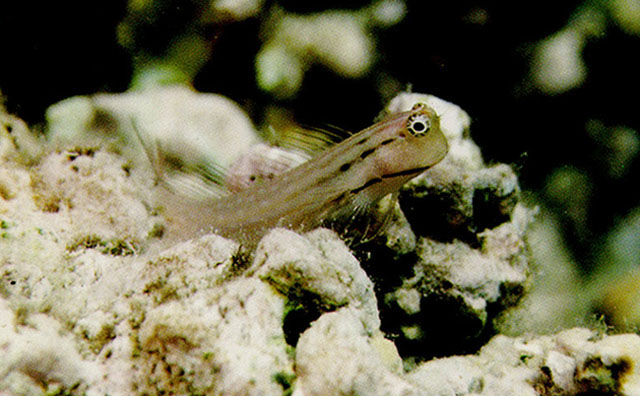| Blenniidae (Combtooth blennies), subfamily: Salariinae |
| 6.5 cm TL (male/unsexed) |
|
reef-associated; marine |
| Western Indian Ocean: west of mid-Indian ocean ridge, north to Djetta, Saudi Arabia and south to Sodwana Bay, South Africa, and Cargados Carajos [=St. Brandon's Shoals]. |
|
Dorsal spines (total): 11-13; Dorsal soft rays (total): 12-15; Anal spines: 2-2; Anal soft rays: 14-17. Body dusky ground in color with pale spots, dusky stripes anteriorly, short stripe on pectoral base. |
| Adults inhabit coral reefs (Ref. 9710). Are mesoplankton feeders (Ref. 94107). Oviparous. Eggs are demersal and adhesive (Ref. 205), and are attached to the substrate via a filamentous, adhesive pad or pedestal (Ref. 94114). Larvae are planktonic, often found in shallow, coastal waters (Ref. 94114). |
|
Least Concern (LC); Date assessed: 25 March 2009 Ref. (130435)
|
| harmless |
Source and more info: www.fishbase.org. For personal, classroom, and other internal use only. Not for publication.

